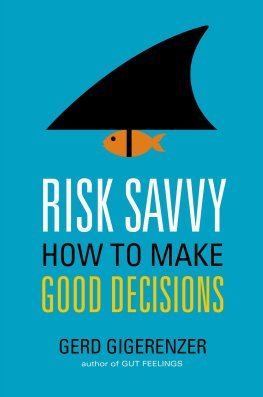
Copyright 2003, 2004, 2014
by Russ Kick
All rights reserved. No part of this publication may be reproduced or transmitted in any form or by any means, electronic or mechanical, including photocopying, recording, or by any information storage and retrieval system, without permission in writing from Hampton Roads Publishing, Inc. Reviewers may quote brief passages.
Original design and layout by Rebecca Meek.
Hampton Roads Publishing Company, Inc.
Charlottesville, VA 22906
Distributed by Red Wheel/Weiser, LLC
www.redwheelweiser.com
Sign up for our newsletter and special offers by going to www.redwheelweiser.com/newsletter/.
Originally published in two volumes under the titles 50 Things You're Not Supposed to Know and 50 Things You're Not Supposed to Know, Vol. 2.
ISBN: 978-1-938875-08-3
Library of Congress Cataloging-in-Publication Data available upon request.
Printed on acid-free paper in the United States of America.
EBM
10 9 8 7 6 5 4 3 2 1
www.redwheelweiser.com
www.redwheelweiser.com/newsletter

CONTENTS
INTRODUCTION
What turns a fact into something you're not supposed to know? Basically, it happens when that piece of information is upsetting, embarrassing, discomforting, or even damaging to a powerful party. The list of such parties is long leaders of nations, legislatures, militaries, intelligence agencies, justice systems, regulatory agencies, corporations, mainstream media, the medical establishment, the educational system, religious institutions, racial and gender groups, academics and scholars in various disciplines, guardians of public morality, followers of ideologies, hypersenstitive leftists, conformist rightists, and others.
Other resistance comes from the fact that every historical figure has developed a cult of worshippers and cheerleaders who utterly refuse in the face of all evidence to admit the failings, hypocrisies, and, in some cases, the outright fraudulence of their idol.
In other cases, a fact doesn't offend an easily pinpointable institution or group. Instead, it's taboo because it exposes societal lies, the fables we tell ourselves in order to sugarcoat harsh reality.
With this in mind, it's time to present a cavalcade of troublesome facts, compressed and boiled down to their very essences so that you can quickly digest them in an info-glutted world. For further explorations, references are given in the back. 
Acknowledgments
Thanks to Anne, my parents, Ruthanne, Jennifer, Billy Dale, Brett & Cristy, Darrell, Terry & Rebekah, Mike, Matt, Gary, Richard, Alex, Rebecca, Jason, Disinfo, and others who've slipped my overstuffed mind at the moment.
01
THE TEN COMMANDMENTS WE ALWAYS SEE AREN'T THE TEN COMMANDMENTS
First Amendment battles continue to rage across the US over the posting of the Ten Commandments in public places courthouses, schools, parks, and pretty much anywhere else you can imagine. Christians argue that they're a part of our Western heritage that should be displayed as ubiquitously as traffic signs. Congressman Bob Barr hilariously suggested that the Columbine massacre wouldn't have happened if the Ten Commandments (also called the Decalogue) had been posted in the high school, and some government officials have directly, purposely disobeyed court rulings against the display of these ten directives supposedly handed down from on high.
Too bad they're all talking about the wrong rules.
Every Decalogue you see from the 5,000-pound granite behemoth inside the Alabama State Judicial Building to the little wallet-cards sold at Christian bookstores is bogus. Simply reading the Bible will prove this. Getting out your King James version, turn to Exodus 20:2-17. You'll see the familiar list of rules about having no other gods, honoring your parents, not killing or coveting, and so on. At this point, though, Moses is just repeating to the people what God told him on Mount Si'nai. These are not written down in any form.
Later, Moses goes back to the Mount, where God gives him two tables of stone with rules written on them (Exodus 31:18). But when Moses comes down the mountain lugging his load, he sees the people worshipping a statue of a calf, causing him to throw a tantrum and smash the tablets on the ground (Exodus 32:19).
In neither of these cases does the Bible refer to commandments. In the first instance, they are words which God spake, while the tablets contain testimony. It is only when Moses goes back for new tablets that we see the phrase ten commandments (Exodus 34:28). In an interesting turn of events, the commandments on these tablets are significantly different than the ten rules Moses recited for the people, meaning that either Moses' memory is faulty or God changed his mind.
Thus, without further ado, we present to you the real Ten Commandments as handed down by the LORD unto Moses (and plainly listed in Exodus 34:13-28). We eagerly await all the new Decalogues, which will undoubtedly contain this correct version:
I. Thou shalt worship no other god.
II. Thou shalt make thee no molten gods.
III. The feast of unleavened bread thou shalt keep.
IV. Six days thou shalt work, but on the seventh day thou shalt rest.
V. Thou shalt observe the feast of weeks, of the firstfruits of wheat harvest, and the feast of ingathering at the year's end.
VI. Thrice in the year shall all your men children appear before the Lord God.
VII. Thou shalt not offer the blood of my sacrifice with leaven.
VIII. Neither shall the sacrifice of the feast of the passover be left unto the morning.
IX. The first of the firstfruits of thy land thou shalt bring unto the house of the LORD thy God.
X. Thou shalt not seethe a kid [ie, a young goat] in his mother's milk.

02
ONE OF THE POPES WROTE AN EROTIC BOOK
Before he was Pope Pius II, Aeneas Sylvius Piccolomini was a poet, scholar, diplomat, and rakehell. And an author. In fact, he wrote a bestseller. People in fifteenth-century Europe couldn't get enough of his Latin novella Historia de duobus amantibus. An article in a scholarly publication on literature claims that Historia was undoubtedly one of the most read stories of the whole Renaissance. The Oxford edition gives a Cliff Notes version of the storyline: The Goodli History tells of the illicit love of Euralius, a high official in the retinue of the [German] Emperor Sigismund, and Lucres, a married lady from Siena [Italy].

It was probably written in 1444, but the earliest known printing is from Antwerp in 1488. By the turn of the century, 37 editions had been published. Somewhere around 1553, the short book appeared in English under the wonderfully old-school title The Goodli History of the Moste Noble and Beautyfull Ladye Lucres of Scene in Tuskane, and of Her Louer Eurialus Verye Pleasaunt and Delectable vnto ye Reder. Despite the obvious historical interest of this archaic Vatican porn, it has never been translated into contemporary language. (The passages quoted below mark the first time that any of the book has appeared in modern English.)
Next page
















